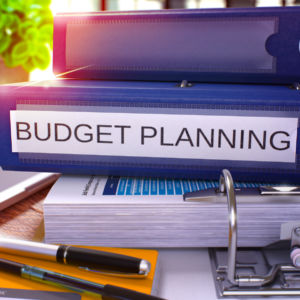For blue states hoping that a post-election stimulus bill would help them plug their COVID-19-related budget holes, the results were a bitter pill to swallow.
With Senate Majority Leader Mitch McConnell and Republicans likely keeping control of the Senate, Democratic hopes for a bailout have been all but dashed.
Nowhere is this more apparent than in the Empire State. New York faces a $14.5 billion funding gap this year. To fund this shortfall, Gov. Andrew Cuomo and the Democratic-controlled Legislature should look to the past for a solution.
Specifically, they should look at a proposal advocated by the late-19th century American economist Henry George that can generate the revenue the state needs, not only to close virus-created shortfalls. but also to fund pressing needs more responsibly.
Even better, imposing George’s land-value tax (LVT) can accomplish those goals without a penny of federal aid. Nor would it burden residents and most businesses with even higher taxes elsewhere.
Indeed, at the right levels, the LVT can permit many and even all other state taxes to be cut or even abolished, while still allowing spending on necessary services to rise.
George argued that land’s worth was both a major source of inequality and an unforgivable waste of economic potential. He understood that land values increase because of the location of land near schools, hospitals, businesses and the like. His LVT would be applied to this socially created value of land.
Taxes reflecting its real value — sorely underestimated by traditional property or land taxes — would therefore break up or shrink large land holdings and resulting fortunes.
The LVT would also create a powerful lure to use land more productively and increase the affordability of property for many more entrepreneurs.
Much more of the nation’s land is used today than in the late 1800s, of course, but evidence abounds that, if anything, it’s valued and taxed at least as lightly.
Therefore, in addition to all its inequality and productivity, a state benefits from a levy reflecting its genuine importance to owners, that would be just the revenue goldmine the hard-pressed state needs.
The evidence of gross land undervaluation and taxation in New York State is compelling. Albany realizes almost no direct revenue from any of the state’s 19.45 million acres, whether located in cities, suburbs, small towns or rural areas.
Research by the Federal Housing Finance Agency indicates that a reasonable valuation for each of these acres would be $801,000, which would result in a $15.50 trillion figure for New York’s total land value.
If each of these acres was taxed at a mere 1.15 percent rate, all of Albany’s annual $178 billion annual budget could be funded. Alternatively, any LVT higher than 1.15 percent would enable Albany to meet additional public financing needs without incurring a single penny of additional debt.
It’s true that not all state land is taxable, nor should be taxed. All the same, the state can run a balanced budget even during this coronavirus year with an LVT that’s only slightly higher than 1.15 percent.
For example, assume that for various reasons (e.g., non-profit organization ownership), 20 percent of the state’s land is tax exempt. If the remaining taxable land — valued at $801,000 per acre and $12.40 trillion in toto — were taxed at 1.43 percent,
New York’s entire $14.5 billion virus-created budget gap could be filled.
At a time of historic financial stress, New York, and other states, are sitting on privately held wealth that the term “gold mine” can’t even begin to describe.
All that’s needed to unlock it for the public good is to use the key created by Henry George more than a century ago.

